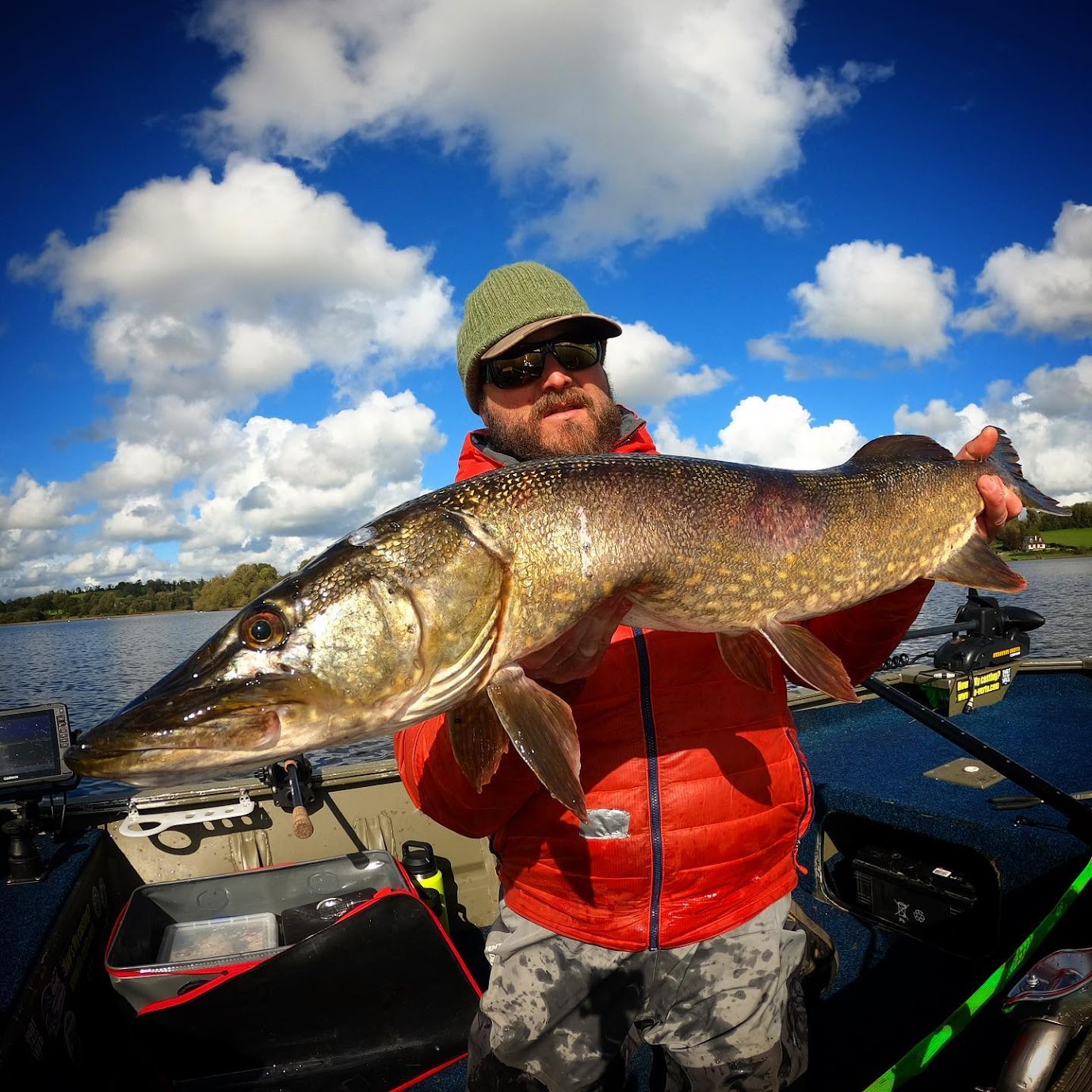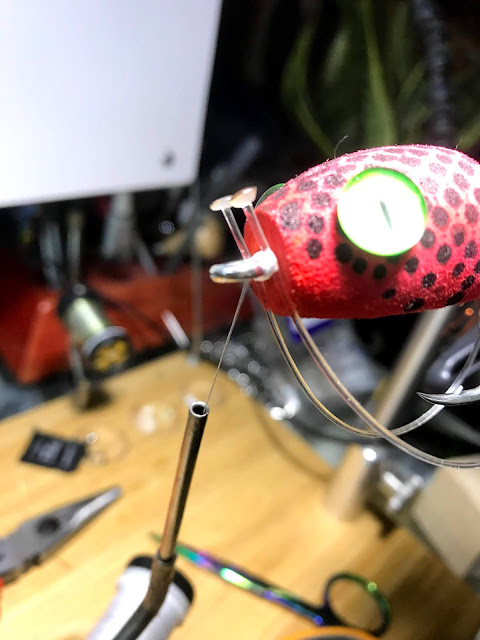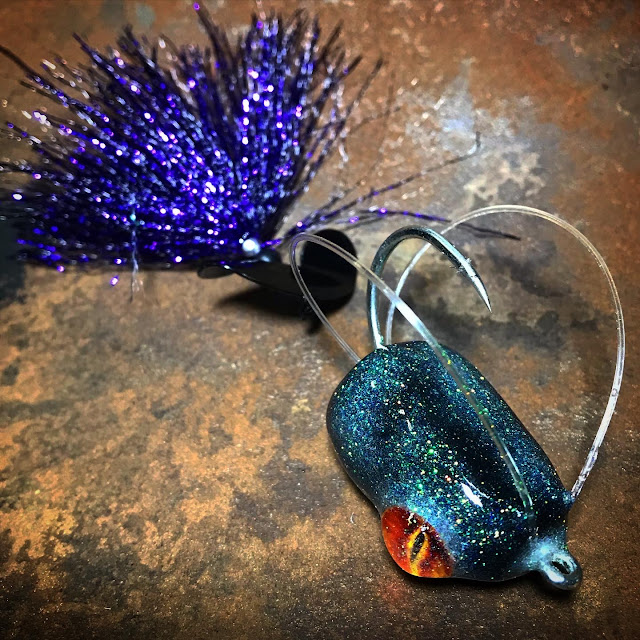A subject that's very personal, and first of all i want to say that what's written on this article is based totally on my experience as a pike angler, guide and lodge owner. This means that over the last 25 years i have seen and tried all sorts of "bite proof" materials here at the lodge and abroad in both fresh and salt water.
All i want from my leader is 100% confidence that it will not break or come undone. If something gives, it's changed right away, i tried countless snaps, tying straight to the fly and now split rings.
- Lets start with the materials that i hate and for good reasons:
Fluorocarbon: To be efficient fluoro for pike needs to be over 120lbs in size.(again i note that i am speaking for here in Ireland) I have seen too many good fish lost here at the lodge with 0.80mm and up to 1.0mm cut clean by pikes. Every year a staggering 60% of big fish are lost because clients still use fluoro that's way to weak!!This isn't right ! I don't see the point of busting your balls tying beautiful flies and putting in front of them a huge thick tippet that breaks completely their swimming action . It's not surprising that other guides and lodges (like MSTPA in Alaska) that have a total ban on fluoro. Maybe it works for the lure anglers that fish big baits, but a fly can so easily be engulfed deep in the mouth of any size pike. Again this is very personal, maybe where you live and the fish you catch need fluoro and you never had a problem, but here i would never put my trust in fluoro. EVER!
Kevlar: too weak, and the so called armed one with wire inside, well there's simply not enough wire inside to resist to pike's teeth.
49 strands steel wire, coated or bare : Very good resistance but kinks way to easily
.
Single strand titanium: Way too stiff for natural fly presentation.
- Now the materials that i trust:
1x7 stainless steel wire: The Bleeding wire from American fishing wire to be more precise.This is the one that i use most.Been using it for about 6 years solid now, both here in Ireland and in Alaska. Yes it does kink but in size 30lbs you can catch a good few fish before it needs changing.This is not a bad thing as changing your leader regularly you will always have something freshly tied and new. I connect my leader to the tippet via either an Albright knot or my preferred : the Six turn Yucatan knot. Inexpensive compared to other materials, i usually buy a 300m spool the will last me a long time, for me and while guiding.Don't be put of by it's bright red colour, it absolutely does not scare the fish away. Many times i fished in the company of other anglers using fluoro and at the end of the day i was catching as many fish (if not more).The idea behind the red colour is that in clear and shallow water the red represents a blood trail.And in deeper water, red is the first colour to disappear.
 |
| The Six turn Yucatan knot, easier to make on the water than an albright |
 |
| Mustad Fastach Nº3 |
Multistrand titanium: Supple and kink resistant, the only problem is because it lasts so long anglers forget to check it and replace when needed resulting in a "surprise break". If you use that material, be sure to check it often , it usually start it's weakness by having the small single strands snapping one by one. Other negative, it's expensive.
Cahira Nitinol wire in multistrands: Very similar to titanium with amazing kink resistance, won't rust, dead straight, can be knotted, but i prefer using a crimp with the triple pass technique. Not as expensive as titanium. Only this year i am really giving this material a go. I first purchased it to make leaders for the Guyana trip , so i went on the heavy side (88lbs). But i liked the way it felt so i got the 44lbs version to try for my pike fishing.
- Lets have a look how i attach the fly to my leaders:
With inexpensive materials ( 1x7 stainless steel) i like to knot straight to the fly with a non slip loop knot or better known as the Rapala knot
I don't like using snaps as they either open or get weak after being open/closed too many times.
The fastach from Mustad is probably one of my favorite, but saying that i had four size 3s that opened on my over the last two years . 3 in Alaska and 1 here in Ireland.
As i like always experimenting and trying new things, this year i am going with the most trusted set up, used widely in saltwater lures, split rings are basically unbreakable. A incorporate a welded ring on all my traces for changing flies fast and hassle free. This has only one drawback...You need to place a split ring on every single fly you intend to use. It's easier to put a solid ring onto a split ring, than putting a split ring onto your fly.
When i'm on the water i really like using the Smith pincette for split rings. A small nipper like tool that opens split rings easily without the need to have a big pair of split ring pliers.
As i said , i am giving a good go on split rings/solid rings this year and i will update you on how the Cahira Nitinol wire holds up and if the split ring set up for pike is a good idea (safety & practicality)
- How to make the solid ring trace:
It's pretty straight forward, i crimp using the triple pass technique, the loop are cushioned and protected with a neoprene sleeve and i cover the crimp with some heat shrink tubing.
For ALL my leaders i use Amnesia , inexpensive ( 5€ a spool) and super solid, this memory free monofilament is the bomb.Comes in many sizes and colours. And i used it in both saltwater in Costa Rica and the Seychelles and in freshwater for many species.
 |
| From left to right: Solid ring, neoprene sleeve, crimp, shrink tube. |
|
 |
| The triple pass technique so you can be sure it won't slip |
 |
| Crimp |
Pros of the solid ring : 100% solid, will not open or break, lighter that a clip or a swivel.
Cons: having to equip your flies with split rings, can take a while at the start to get used to changing your flies.
At the end if its solid and discreet i'm all for it!
 |
| Top of the trace, perfection loop on Amnesia, loop to loop connection. |
 |
| Finished product. |
 |
| A fly ready armed with a split ring that will stay in place. |
 |
| The Smith pincette, a great little tool |
 |
| Connected! |
 |
| Big size on the left for the Amazon(88lbs) and the pike ones on the right (44lbs) |
 |
| Nice and neat. |
This is where i get the Nitinol wire:
https://www.cahiranitinol.co.uk/























































